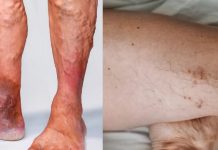Overview, Causes, & Risk Factors
Generalized anxiety disorder is also called GAD. With this condition, theindividual has chronic, repeated episodes of severe emotional and physical distress.People with this disorder have vague feelings of fear, impending danger, and dread forunknown reasons. In turn, these strong feelings result in physical changes in the body.
What is going on in the body?
People who have chronic anxiety have altered brain activity, which can beseen in brain X-rays, scans, or other studies.
What are the causes and risks of the condition?
GAD typically begins in childhood or during the teen years. It can alsobegin in adulthood. It is more common among women. GAD is not the result of amedical condition, medicine, or a substance use disorder. Experts believe that GADruns in families. It may also be related to personality factors such as low self-esteemand poor coping skills. Life experiences can play a role too. For example, abuse,violence, and poverty might make someone more prone to developing GAD.
Symptoms & Signs
What are the signs and symptoms of the condition?
GAD causes constant, exaggerated worry that interferes with many areasof the person’s life. Symptoms include:
Unlike other, more acute anxiety disorders, people who have GAD donot avoid the situations that make them anxious. However, the symptoms can stillinterfere with their routine activities. They may overreact to what they see as dangers.They tend to pay attention to the negative details in a situation. And they may havelittle faith in their own ability to cope with their lives.
Diagnosis & Tests
How is the condition diagnosed?
Physicians or mental healthcare providers usually diagnose an anxietydisorder. They will review the person’s symptoms and conduct a complete mental healthhistory and physical exam. This will help them rule out a physical cause. The doctorwill also discuss lifestyle factors such as alcohol or drug use, stresses, recent lifechanges, medical illnesses, or relationship factors. To be diagnosed with the disorder,a person must have had symptoms of GAD most days for the past 6 months.
A thorough exam should include questions about the issues and eventsthat increase the individual’s anxiety. For example, the doctor may ask questions such as these:
Prevention & Expectations
What can be done to prevent the condition?
To prevent GAD, people must manage the demands that cause the problems.Learning how to cope better with the things that trigger anxiety can help. A good supportsystem can also be helpful. Setting realistic demands and expectations is also key.
Take these actions to reduce anxiety:
What are the long-term effects of the condition?
Anxiety is often linked to depression and can cause problems in a person’s workand social life. Unlike many other anxiety disorders, the symptoms of generalizedanxiety disorder seem to lessen somewhat with age.
What are the risks to others?
GAD may have a negative effect on the individual’s relationships with friends and family.
Treatment & Monitoring
What are the treatments for the condition?
The treatments for GAD are similar to the prevention methods listed above.A combination of lifestyle changes, stress reduction, relaxation techniques, counseling,or medicine may be effective. Cognitive behavioral therapy is useful.
Medicines may be used to treat anxiety. Examples of theseinclude antidepressants, such as
What are the side effects of the treatments?
Medicine side effects depend on the drug prescribed. Drugs that causepsychological and physical addiction should be used with care.
What happens after treatment for the condition?
Most people are able to return to their daily activities after being treatedwith therapy and medicine. Often, medicine is given for a long time.
How is the condition monitored?
Keep track of symptoms and report any that are new or worsening tothe healthcare provider. He or she may need to adjust the medicine so that it works better or sothere are fewer side effects.
Article type: xmedgeneral














































